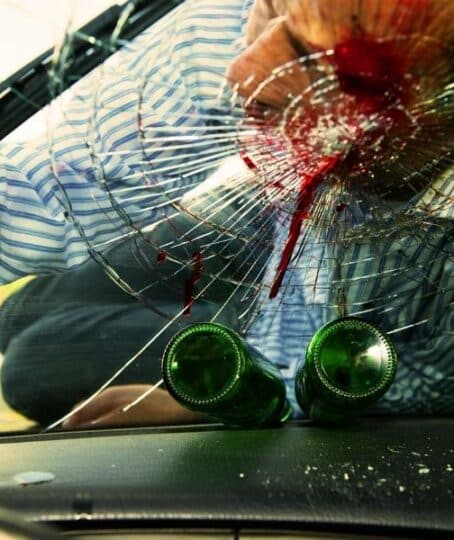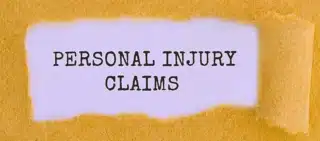
When a Dog Attacks Again and Again If dogs attack once, it’s alarming. When they attack five times, it’s no...


To receive compensation from the at-fault driver, you will need to prove fault after a DUI accident in Illinois. If you have been in a car accident involving a person who was driving while under the influence of alcohol (DUI), you may be entitled to compensation for damages from the intoxicated driver. However, the mere fact that the other driver was driving under the influence does not automatically make him or her liable for those damages.
Each year, the cost of alcohol-related car accidents totals more than $44 million. Roughly one-third of deaths from car crashes in the United States involve a drunk driver, and every day, 28 people die in auto accidents involving an alcohol-impaired driver. The number of drivers who drive while alcohol-impaired can total about 147 million per year.

In Illinois, a driver who is at fault must compensate a victim for damages arising out of any accidents. However, just because a person is driving under the influence does not always establish that they were at fault. To establish fault, you need to prove four elements. These four elements are a duty of care, breach of that duty of care, causation, and damages.
Whether a duty of care exists is usually determined as a matter of law. A duty of care arises when there is a relationship between the parties, requiring the defendant to act in a certain manner, to guard against the possibility of injury or harm to the plaintiff.
When drivers get behind the wheel of a vehicle, they take upon themselves a duty of care. The law imposes requirements on drivers. Drivers are required to obtain a license and be mentally and physically able to drive a vehicle. This duty requires them to avoid actions that could lead to injury. Further, it requires them to be watchful, attentive, and cautious, and to exhibit the same judgment that a reasonable person would towards others while driving.
If you are involved in a car accident, the other driver has a duty of care towards you, and others on the road, because of driving a vehicle.
A person breaches a duty of care by failing to comply with a reasonable standard of care. For a driver, this will include speeding; failing to observe traffic signals, such as running a stop sign or failing to yield; erratic driving; breaking traffic laws; and driving under the influence. Driving while under the influence of alcohol constitutes a breach of this duty of care.
Cause consists of two elements - actual cause and proximate cause.
The actual cause is a question of fact and is determined by applying the “but for” analysis. This is determined by asking whether the injury or harm would have occurred “but for” the defendant’s actions. In other words, if you were to remove the defendant’s actions, would the injury still have resulted?
Proximate cause is a more imprecise concept than the actual cause. It asks whether the defendant should be held legally responsible. For proximate cause to exist, the harm or injury suffered must be reasonably foreseeable due to the act or negligence of the defendant. The proximate cause does not exist where a third-party causes injury and the conduct of the third party is not foreseeable.
An example would be when a person is injured in a car crash. The person is treated in the hospital and suffers other injuries because of negligent medical care. In this case, the person would not have suffered these extra injuries without the conduct of the other driver or defendant, who is the actual cause.
However, the conduct of the medical staff was not foreseeable and broke the direct chain of events between the driver’s conduct and the further injuries. The driver would be the actual cause of all the injuries, but the proximate cause only for the original injuries, and not the further injuries.
In a DUI accident, causation will need to be determined based on whether the drinking and driving caused the accident, or whether it would have happened regardless of the driver being intoxicated. For example, if the accident occurred because of malfunctioning traffic lights, causation will not be due to the intoxication of the driver. If it was caused by the driver’s poor judgment from being intoxicated, then causation will exist. Evidence and the facts of the accident will need to be reviewed to determine if intoxication was the cause.
The final part of establishing fault in a DUI case is to prove that you have suffered legally recognized harm as a result of the accident. This usually takes the form of injury or damage to property. It is not enough that the other driver failed to exercise reasonable care. This failure of reasonable care must result in actual damages to you.
Illinois law allows you to claim economic damages, which are tangible losses. These may include your past and future medical expenses, loss of income or earnings, and other property loss.
You can also recover non-economic damages. These losses without tangible values may include pain and suffering, disability, disfigurement, loss of consortium, and loss of society.
This means that for any wages that you have lost or will lose in the future due to the accident, medical bills and care, physical therapy, and rehabilitation that you have had to pay for, as well as loss of lifestyle or enjoyment of life, you have suffered damages.
This fulfills the final requirement of fault. The monetary value of these is what you will claim in your lawsuit. These damages can take time and may be difficult to fully estimate. A DUI accident lawyer can help you assess these damages.
You need to know what to do after a car accident. To prove fault after a DUI accident, you will need evidence to support your claim that the other driver was at fault.
The first step is to report the accident to the police so that they can file a crash report. A crash report must be filed if the accident caused death, bodily injury, and damage more than $1,500 if the drivers are insured, or $500 if any drivers are uninsured. This accident report is filed by the police if they arrive at the scene. If they do not arrive at the scene of the accident, then you have 10 days in which to file the report. This crash report is an important part of obtaining evidence since it contains details of the accident.
These details include the time and place of the accident, driver’s license information for all drivers involved, name, address, and date of birth of drivers involved, and the name and address of the registered owners of the vehicles involved. It also has notes on vehicle damage, if injuries were reported, and if any crash victims had to be transported to the hospital by EMS. The crash report contains information critical to proving fault in a DUI accident. This information consists of details of the primary and secondary cause of the accident, the owner of the damaged property, the posted speed limit, and details of witnesses to the accident. A copy of the crash report can be requested online or via mail.
Perhaps most importantly, if a police officer arrives at the scene and suspects that one of the drivers was intoxicated, that police officer can ask the driver to submit to a Breathalyzer test at the scene, or a urine or blood test at a secondary location. The results of this test, if positive, would provide evidence of intoxication.
If a driver is arrested by a police officer for DUI, he or she may face criminal charges. If the driver is convicted, this may support your case, but is not essential to proving fault in your case.
In addition to calling the police and relying on their evidence, including the accident report, you should collect any evidence that you can yourself. This includes information about the other driver and vehicle, such as name, address, license plate number and insurance information. You should also collect the contact information of potential witnesses and take photographs of the accident scene and report the accident to your insurance company. Additionally, you should keep all receipts and bills from your medical care as proof of damages that you have suffered so far.
You should seek medical help after an accident, even if you do not think that you have sustained injuries, or no matter how minor your injuries are. This ensures that you do not have any severe injuries that you are not aware of that need treatment and which would then go untreated. It also provides evidence of all injuries that you have and their extent.
You will want to collect evidence as quickly as possible since injuries heal, road marks go away and memories fade. The quicker you collect evidence, the stronger your evidence may be. An attorney can guide you through the process. In Illinois, you have two years in which to make a claim for a DUI accident.
Proving negligence, as a form of fault, requires a person to meet a standard of care that any reasonable person would under the circumstances. A person who falls short of this standard of care is deemed negligent. So far, we have only discussed the negligence of the other driver by being intoxicated while driving.
If you were in a car crash, even if the other driver was at fault, you may still have also fallen short of the standard of care that a reasonable person would take. This means that you may have also been negligent. This is called comparative negligence. Comparative negligence is a defense that a person who is at fault can raise in a lawsuit.
For example, you could be negligent at the time of the accident by:
For a defense of comparative negligence to be successful, it needs to prove that your negligence also contributed to the accident. Comparative negligence can eliminate your claim entirely or reduce your claim by apportioning your damages according to the degree of your negligence. It considers what percentage of your negligence contributed to the accident.
In reducing your claim, for example, if a judge or jury finds that you were 20% to blame for the accident, and the other driver was 80% to blame, then the amount of the damages that you are entitled to will be reduced by 20%. So, if you had a claim for $100,000, but the court found that your negligence was 20% to blame for the accident, then your damages are reduced by 20%, and you will only be awarded $80,000 in damages.
As for removing our claim entirely, in Illinois, the threshold is 50%. So, if you were more than 50% to blame for the accident, then you will lose your claim entirely. If you were less than 50% to blame, then you will still have a claim, it will just be reduced by a percentage equal to your percentage contribution to the accident. If you were not to blame at all, then you will have a claim for the full amount of damages that you can prove.
Often, rather than having to go to trial, you may be able to get a reasonable settlement for a car accident if you know how to prove fault after a DUI accident in Illinois. In this case, the other driver will offer you an amount of money in return for you dismissing any related litigation.
You May Also Be Interested In
Illinois Car Insurance Verification
When to get a Lawyer After an Auto Accident
Who to Sue After a Car Accident With a Taxi
Taxi Accidents: When a Taxi Cab Costs More Than a Fare
Is Illinois a Comparative Negligence State for Car Accidents?

When a Dog Attacks Again and Again If dogs attack once, it’s alarming. When they attack five times, it’s no...

Overview of the Personal Injury Claim Process in Illinois No one expects to suffer an injury or get involved in...

Exploring Caps on Damages in Illinois Personal Injury Cases Illinois does not have laws capping damages in successful personal injury...